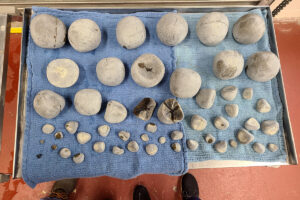Suspensory Injury’s Effect on Future Racing Performance
You had high hopes for your Thoroughbred racing prospect until he sustained a suspensory ligament branch injury as a yearling. The question now is, after rehab, should you continue to pursue his racing career, or should you skip the track and point him down a different career path? Recent study results suggest the answer depends on the severity of the injury.
Jonathan McLellan, BVMS, MRCVS, and Sarah Plevin, BVMS, MRCVS, of Florida Equine Veterinary Associates, in Ocala, recently hypothesized that youngsters who injure a suspensory ligament branch are less likely to race to their potential. McLellan presented the results of their retrospective study on the topic during the 2013 American Association of Equine Practitioners’ Convention, held Dec. 7-11 in Nashville, Tenn.
Specifically, McLellan reviewed juvenile insertional suspensory branch injuries (JISBI), which occur at the suspensory ligament’s insertion on the proximal sesamoid bones (the two small bones sitting at the base of the cannon bone in back of the fetlock joint) between ages 1 and 2. Clinical signs include localized heat and swelling, pain on palpation, variable lameness (typically following speed work), a dropped appearance of the fetlock, and fetlock joint effusion (swelling). Veterinarians typically diagnose JISBI using ultrasound.
McLellan said the aim of their research was to allow veterinarians to provide evidence-based advice on the disease to owners of horses with this injury
Create a free account with TheHorse.com to view this content.
TheHorse.com is home to thousands of free articles about horse health care. In order to access some of our exclusive free content, you must be signed into TheHorse.com.
Start your free account today!
Already have an account?
and continue reading.

Related Articles
Stay on top of the most recent Horse Health news with

















